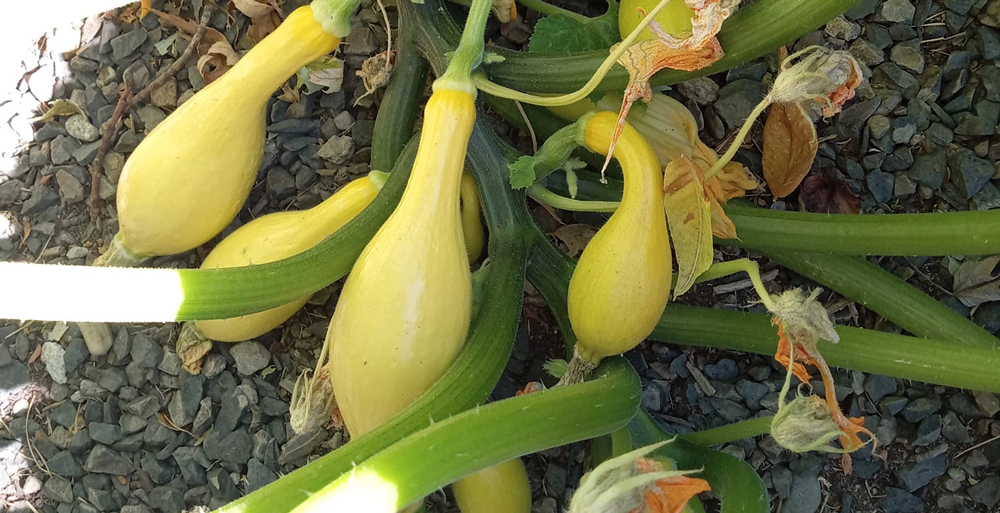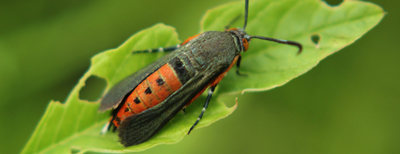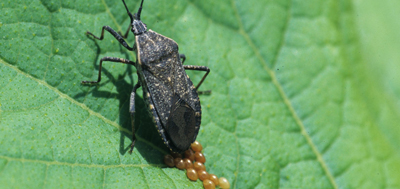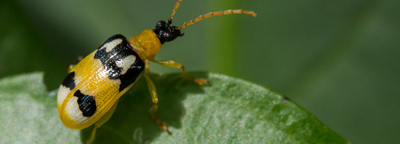
Gardening brings peace, pride, and sustenance—but pests can pose a significant challenge, especially for squash. This guide equips you with practical strategies to protect your squash plants from common pests like squash vine borers, squash bugs, and cucumber beetles. Let’s dive in and ensure your garden thrives!
Why Pests Target Squash
Squash, along with cucumbers, pumpkins, gourds, and melons, belongs to the Cucurbit family (cue-CUR-bĭts). These plants share vulnerabilities to pests, so understanding their lifecycle and behaviors will help you stay one step ahead.
Recognizing Pest Problems
- Wilting Leaves: Sudden wilting, especially on one side of the plant, can signal squash vine borer damage or bacterial wilt spread by cucumber beetles.
- Bore Holes and Frass: Look for small holes at the base of stems, accompanied by sawdust-like frass, indicating squash vine borers.
- Egg Clusters: Copper-colored eggs under leaves often mean squash bugs.
- Yellowing or Stressed Plants: May suggest pests feeding on roots or stems.
Prevention and Physical Barriers
1. Aluminum Foil Collars
Protect plant stems from squash vine borers, cutworms, and Southern blight.
- How to Apply:
- Tear regular foil into 5–7 inch strips or use pre-cut sheets.
- Wrap loosely around stems, covering ½ inch below soil to 4–6 inches above.
- Apply before mid-June and replace after rain or damage.
- Remove by mid-August when borer activity subsides.
2. Support Structures
Use trellises or funnel-shaped tomato cages to elevate plants.
- Benefits:
- Keeps fruits off the ground, reducing pest access and soil-borne diseases.
- Improves air circulation, minimizing fungal risks.
- Simplifies pest detection and harvesting.
- Pro Tip: Use hammocks for heavy squash to prevent vines from snapping.
Managing Common Squash Pests

1. Squash Vine Borers
These pests start as day-time moths with olive-green front wings and bright orange abdomens. Their larvae bore into stems, causing severe damage.
Prevention:
- Wrap plant stems with foil collars.
- Delay planting until late June to avoid peak moth activity.
- Use row covers until flowering begins.
- Plant resistant varieties like butternut or crooked-neck squash.
- Use pheromone traps to monitor moth activity.
Monitoring:
- Look for bore holes and frass near the base of stems.
- Check for wilting leaves despite adequate watering.
Treatment:
- Slit stems near the damage and remove larvae using tweezers or fingers.
- Cover the damaged area with moist soil to promote new root growth.
- Inject Bacillus thuringiensis (Bt) into stems to kill larvae naturally.

2. Squash Bugs
Squash bugs damage plants by feeding on sap, causing yellowing leaves and eventual death.
Prevention:
- Plant trap crops like Hubbard squash 15–20 feet away from your main crop.
- Rotate crops annually to disrupt pest lifecycles.
- Use companion plants like nasturtiums to repel bugs.
Monitoring:
- Check leaf undersides for copper-colored eggs.
- Inspect near the plant base and under mulch for adult bugs.
Control:
- Hand-pick adults, nymphs, and eggs, and drop them into soapy water.
- Place boards near plants as traps and dispose of bugs in the morning.
- Apply neem oil to the undersides of leaves during the nymph stage.
- Sprinkle food-grade diatomaceous earth (DE) around stems to deter pests.

3. Cucumber Beetles
These yellow-green beetles, spotted or striped, feed on leaves and spread bacterial wilt.
Prevention:
- Use floating row covers until flowering starts.
- Plant marigolds and nasturtiums to repel pests and attract beneficial insects.
- Maintain healthy soil to support resilient plants.
Monitoring:
- Look for beetles under leaves or near soil at the plant base.
- Watch for bacterial wilt symptoms: one-sided wilting followed by plant death.
Control:
- Apply kaolin clay spray (3 cups powder + 1 gallon water + 1 tbsp dish soap) to deter beetles.
- Use yellow sticky traps to capture adults.
- Introduce beneficial nematodes to the soil to target larvae.
Integrated Pest Management (IPM) Strategies
1. Garden Hygiene
- Remove plant debris promptly to reduce overwintering pests.
- Thin plants for better air circulation and pest detection.
2. Companion Planting
- Marigolds: Repel pests, attract beneficial insects, and add edible flowers to salads.
- Nasturtiums: Act as a trap crop while repelling squash bugs and cucumber beetles.
- Dill: Attracts ladybugs and parasitic wasps, natural enemies of pests.
3. Biological Controls
- Ladybugs: Feast on aphids and small pests.
- Parasitic Wasps: Kill pests by laying eggs inside their bodies.
- Ground Beetles: Hunt soil-dwelling pests.
4. Habitat Creation
- Plant flowering annuals and herbs near the garden.
- Provide water sources for beneficial insects.
- Create insect hotels or brush piles for shelter.
Chemical Controls (Last Resort)
Use organic options only if other methods fail:
- Neem Oil: Mix with water and dish detergent for a natural insecticide. Spray in early morning or evening.
- Insecticidal Soap: Targets soft-bodied insects.
- Pyrethrin: Effective against pests but may harm pollinators—use cautiously.
Monitoring Schedule
Daily
- Inspect for wilting leaves, bore holes, frass, and pest damage.
- Check foil collars for water accumulation or damage.
Weekly
- Inspect leaves and stems thoroughly, especially undersides.
- Empty pest traps and assess beneficial insect populations.
- Record pest management activities for future reference.
Monthly
- Evaluate plant health and adjust strategies as needed.
- Check supports and barriers for damage.
- Plan succession planting to replace damaged crops.
With the right knowledge and practices, you can protect your squash plants from pests and enjoy a thriving garden. Pest management is not just about control—it’s about fostering a balanced, healthy ecosystem.
Questions or insights? Share them in the comments below. We’d love to hear from you!
































































































































































































































































































































































































































































































































































































































































